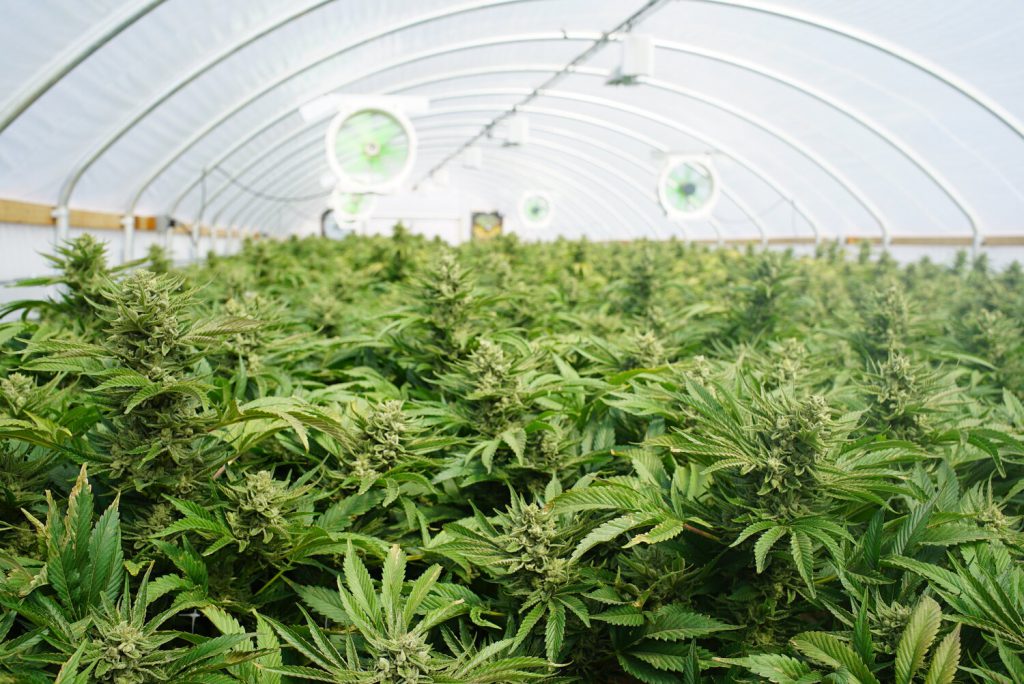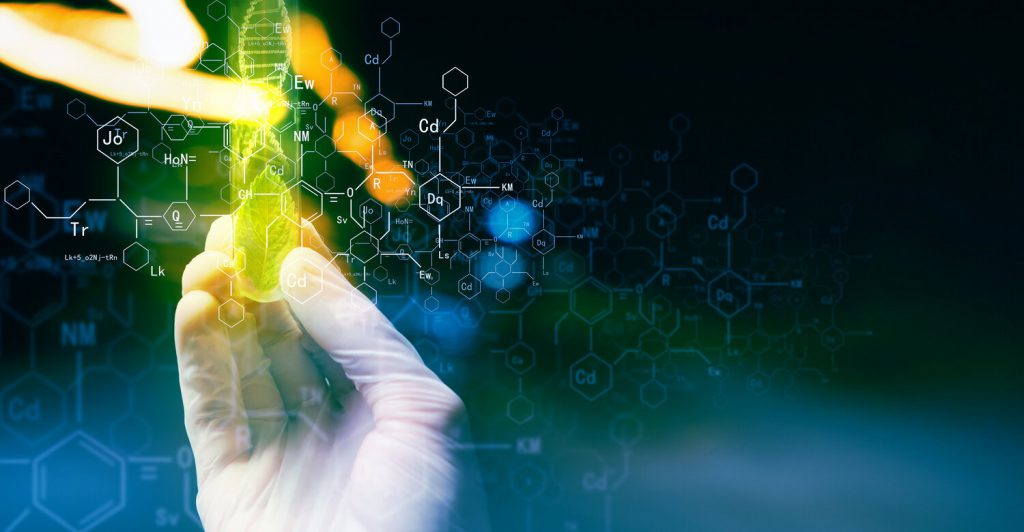Genetic Stability Vs. Sexual Stability

Within the growing community are many terms that are loosely used to mean a variety of things, which can be confusing when looking for precision in explanation. Many refer to plants and genetics as “stable” or “unstable” but really mean that the plants are “sexually stable” or “sexually unstable” rather than homogenous as genetic stability would imply. Below, we’ve defined a few key terms to make these conversations less confusing, as well as provided genetic and environmental reasons for visible intersex traits.
Defining Genetic Stability
What is genetic stability? Often, there is a misunderstanding in cannabis that people believe intersex traits are a result of scientific stability.
When it comes to genetics, the term "stable" refers to a high degree of predictability of expression across multiple environments and in breeding. Stable genetics will offer a consistent plant and expressions therein. In agriculture, the standard for stability is sometimes upwards of 95%, meaning that 95/100 seeds will be the same.
When it comes to intersex traits, such as “hermaphroditic” expression, I refer to this characteristic as “sexual stability”, for a lack of a better endemic term. A sexually stable genetic should present intersex traits in less than 1% of seeds.
When applied to cannabis, this means that, due to the typical breeding and seed making taking place, many genetics are neither genetically stable (producing one distinct expression) nor sexually stable (free from intersex traits) due to the parents used in the growing and pollination processes. This results in huge discrepancies in quality in the modern global seed market.
Intersex Traits and Some of Their Causes
As mentioned, there are both genetic predispositions as well as environmental conditions that can induce a plant to display intersex traits.
Genetic Reasons for Intersex Traits
Some genetics naturally are prone to intersex traits. Chem Dog and Sour Diesel varieties are perfect examples; in some rooms, they will grow without displaying any intersex characteristics, while other rooms will always show these conditions.
In order to determine if a plant is genetically predisposed to intersex traits, you have to understand that line of genetics. Even a cut directly from a source, in this case Chem D, that isn’t showing the traits, may still breed those traits; it may result in less frequent occurrences in the offspring, but the genetic is still in there. This is also dependent upon what you are crossing with.

Understanding the parents and grandparents and lineage of any variety is important. Knowing if it has the propensity to have intersex traits because of its lineage, even if it doesn’t show them in its growing expressions, will help guide your efforts to adjust as needed. People who continue to work lines like the Chem Dog family will have recessive intersex tendencies. I gave up on these lineages because each time that I was able to get the seed to represent the original cut, it reacquired the intersex traits, and the ones that I was able to breed these traits out of didn’t have the same qualities of the original cuts; some varieties are just stubborn.
In addition to recessive intersex tendencies, there are also varieties that simply don’t cross well together. If you cross two varieties that have recessive intersex traits, you may end up with a more prevalent expression. I see this a lot with Chem D and Cookies, and line like GMO that naturally have a high tendency of intersex traits within the lineage. In some rooms, I’ve seen it pop male flowers, and in other rooms it doesn’t; Both of its parents have recessive, intersex traits, which means it is always a potential.
Seed Making and Healthy Mothers
How a seed is made and the conditions that the mothers (and parents) were kept in can have a large impact on the traits the plant exhibits. Health of the maintained parents, or lack thereof, can also affect how a plant breeds.
Many varieties and “special cuts” that are used commonly have come from bag seeds which are often the result of intersex flowers. This practice has perpetuated intersex traits throughout at least 50% of choice cuts that are known out there to have genetic recessive intersex trait breeding tendencies.
Environmental Reasons for Intersex Traits
In addition to genetic disposition, intersex traits can be brought out by the environment; cultivars with recessive intersex traits can also be exacerbated by the room. Organic gardens, those with elevated CO2, and genetics with less dramatic vigorous growth typically show less intersex expression.
Of these environmental reasons, the most commonly discussed are light leaks. Ironically, intersex traits caused by light leaks are not as common. While light leaks can cause intersex traits especially in early flower, light leaks typically cause a mutated preflower growth rather than intersex expressions.

More commonly, intersex traits induced by the environment are typically caused by low CO2, poor circulation, PGRs and/or Root Stimulants (particularly those from out of the country that may have banned substances). Another, less common environmental cause of intersex traits can be an optimum growing environment.
In optimum conditions, hypervigorous growth from seeds or clones in Week 2 and 3 of flower can cause sporadic intersex traits on typically lower branching that otherwise won’t show; this is more common with seeds, but I have seen it happen with clones also.
Common places and Times to Find Intersex Traits
Typically, intersex traits present themselves between Day 15-Day 28 of flower or as they ripen. They will typically occur mostly on lower branching and lateral branching, as well as along the primary/apex stalk. They can appear adjacent to or within a female flower.
Removal of lower growth nodes on lateral branching (lollipopping) in early flowering can mitigate the probability of getting these intersex flowers, and will certainly make identifying and seeing them much easier if that area is cleaned out of the plant (which I suggest anyways).
Some varieties show intersex traits in the form of “bananas” when flowers go past their ripening phase. Harvesting is typically the best solution in this case, although the flowers that are showing bananas are often sterile male flowers.
Fertility of the female plants is highest between Week 3 and Week 7. During these weeks, it is imperative to watch for intersex traits that could cause unwanted pollination within your room or tent.
Although there are treatments like ethylene to prevent male flowers from showing, or reversing male flowers back, removal of any of these flowers and their growth nodes is always suggested over any chemical treatments.

If you notice intersex traits:
• Check the plant's lineage first; learn more about the parents and grandparents first, and eliminate the potential of genetics as the cause. If genetic or parents are prone to hermaphrodite expressions, it may simply be a plant showing its recessive genes.
• If you have determined that it is not a result of a plant’s genetic lineage, then evaluate your environment. Your environment will open many questions and assumes it is not the result of genetics; your environment will lie to you if the cause is genetic.
The Perfect Grow Conundrum
As touched on, a very rare but possible cause of intersex traits is when the room and growing environment are “too perfect”. Plants grown aggressively (high humidity, high heat, high CO2, high end of uMole) can bring out intersex expression in Week 3 of flower from seed that would not otherwise show. While this is typically not a trait that is passed along to clone, cuts like Dog Waltz and the original Chem D cut maintain that phenotypical expression from clone, and varies from room to room.
Dog Waltz is my favorite thing to smoke and grow, and almost always shows intersex traits in Week 3 of flower. Several growers that I know have never seen intersex traits, but by the way I clean up my the bottoms of plants, with everything else the same, even cleaning up more to reengineer and redirect GA3, in Week 3 of flower I still get intersex traits on the third growth node from largest lateral branch, and always in one cluster. This also happens with Chem Dog and Sour Diesel.
In these rare cases, everything being perfect in the grow rooms – very healthy, lush, happy plants – these plants will give off a male cluster sometimes on lateral branches halfway down, visible around Day 14-18 of flower. Because of these grow conditions, the plant produces more GA3 that it would otherwise need, causing it to produce undesired expressions.
But just because you’re seeing intersex traits doesn’t me you’re a perfect grower; more likely than not, these displays are the result of genes and environmental issues than a perfect grow. I’ve personally only seen four situations (in my entire career) where the grow was so perfect that a plant displayed intersex traits, three of which happened over a 15 year period.
Actual Hermaphrodite Plants
What is an actual hermaphrodite? A true hermaphrodite plant has an extra chromosome resulting in the expression of both male and female reproductive flowers.
Approximately 1-3 out of 1000 plants are mutant, and could lead to a true hermaphrodite (XXY). The rest are the result of either the genetics, the health maintained of the parents used in breeding (epigenetics), and/or the quality of those breeding practices. Additionally, the disclosure of those weaknesses to certain environmental triggers and knowledge of these scenarios that are likely to bring out negative expressions can help to prevent and account for these traits before they appear. We will be addressing this in future releases.
Plants aren’t that complicated. If they are having a bad time, it usually means they are in bad situations; if they are having a good time, it’s most likely a good situation. Aside from the probable genetic mutation, these traits are caused by lineage and/or environmental factors.